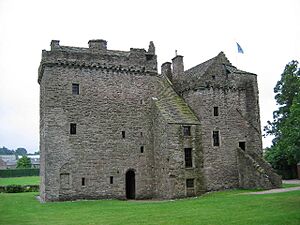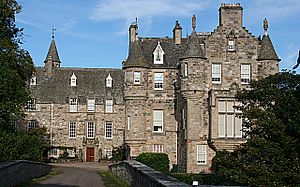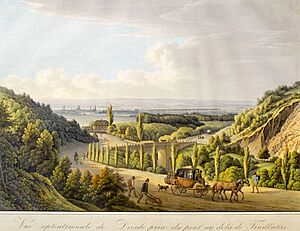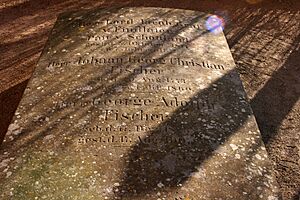James Ogilvy, 7th Earl of Findlater facts for kids
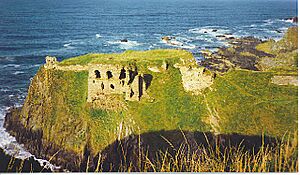
James Ogilvy, 7th Earl of Findlater and 4th Earl of Seafield (born April 10, 1750 – died October 5, 1811) was a Scottish nobleman. He was also a talented amateur landscape architect and a generous person. He helped make the English garden style popular in Europe. He spent a lot of money on public projects and improving beautiful places.
Contents
Early Life and Family
James Ogilvy was born at Huntingtower Castle in 1750. His father was James Ogilvy, 6th Earl of Findlater. His mother was Lady Mary Murray. James was the only son, as his brother John died in 1763. In 1770, when he was just 20, James inherited his family's estates. This included Cullen House.
He studied at Oxford University. After his studies, he moved to Brussels in the Austrian Netherlands. In 1779, he married Christina Teresa Murray. She was the daughter of Sir Joseph Murray, a count and a general. They lived together for only a short time.
Life Away from Scotland
Lord Findlater spent much of his life outside Scotland. In 1791, he made a joke about Jane, Duchess of Gordon. This joke caused trouble in court. Because of this, Findlater left Scotland and never returned. It is not clear if he was forced to leave or chose to go.
Improving the Cullen Estate
Even though he traveled a lot, Findlater stayed involved with his Scottish estates. He hired famous architects to work on his properties. He asked Robert Adam to design a new house for Cullen, Moray. He also had James Playfair redesign the existing house and its garden.
In 1773, James Boswell and Dr. Samuel Johnson visited the estate. They said it was "admirably laid out," meaning it was very well designed. Adam's plans for a new house were not built. However, Findlater's idea to move the town of Cullen closer to the harbor was later followed.
From 1791, a retired professor named John Ross managed Findlater's estates. At the time of his death, Findlater's Scottish estates were worth a lot of money.
Contributions to Carlsbad
Around 1794, Lord Findlater began visiting Carlsbad in Bohemia. He went there to drink the special spa waters for his health. He became a very important supporter of the city. He gave large amounts of money to local charities. He also paid to improve the areas around the town, including building paths.
Today, a path called Findlaterova stezka (Findlater path) is still used. Along the paths, you can find Findlater's Temple. This is a beautiful round building with a dome. Lord Findlater built it to show thanks for the health benefits he got from the Carlsbad waters.
Nearby is Findlater's Obelisk. This is a granite monument, 28 feet tall. It was built in 1804 to honor Lord Findlater. The citizens of Carlsbad built it to thank him for being "the friend and beautifier of nature." The obelisk offers a great view of the valley below.
Developing Dresden's Landscape
In 1802, Lord Findlater was asked to create an English garden at Gaussig House. This house was near Bautzen in Germany. In 1803, Findlater's private secretary, Johann Georg Fischer, bought Helfenberg Manor for him. This land was in the Dresden Elbe Valley. It included five vineyards, like "Findlaters Vineyard." These vineyards had amazing views over the Elbe river.
The manor had a small park. Findlater improved it with rare shrubs and trees. On Bredemannschen mountain, where Schloss Albrechtsberg now stands, Findlater built a beautiful palace. This palace was designed in the Neoclassical style. It quickly became known as "The most beautiful family palace in Dresden." The terraces along the Elbe river were decorated with pergolas, ponds, and grapevines.
Later Life and Legacy
Lord Findlater passed away in 1811. He left his Dresden property to Johann Georg Fischer. Fischer lived at Helfenberg Manor until he died in 1860. Findlater's Scottish relatives disagreed with his will. They went to court to challenge the gifts to Fischer.
After Findlater's death, the title of Earl of Findlater was no longer used. The title of Earl of Seafield went to his cousin, Sir Lewis Alexander Grant. Findlater is buried at the Loschwitz parish church. His gravestone includes both his name and that of Johann Georg Christian Fischer.
See also
- Restored Findlater Temple (in Czech)
- Photograph of Findlater Temple
- Drawing of Findlater Temple in 1810
- Findlater Obelisk (in Czech)


